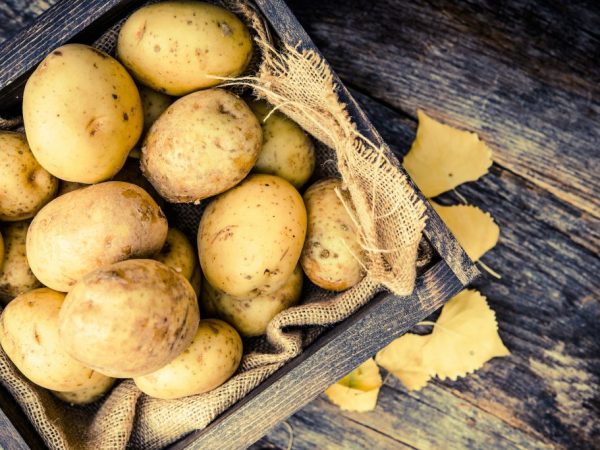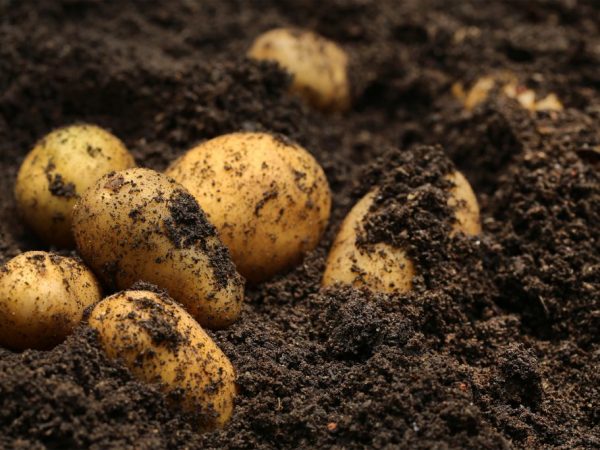Dutch potato varieties
As a rule, in Russia, people buy summer cottages and plant all the free space with various vegetables. Potatoes are always allocated the largest area on the plot where the best varieties are planted in order to get a good and bountiful harvest. In order not to miscalculate with the choice, many gardeners choose Dutch potatoes. Dutch potatoes are considered disease resistant, easy to grow and yield good yields.

Dutch potato varieties
Benefits of potatoes
- Any Dutch potato variety has good resistance to common diseases. Even when the leaves of plants can be affected by late blight, the tubers remain intact.
- The appearance of the fruit attracts more and more gardeners from different countries every year. Large root vegetables with a smooth, dense skin and a minimum number of eyes are what any gardener needs.
- Dutch potato varieties withstand transportation and storage very well.
Varieties of varieties
Any Dutch potato variety takes root quite well and gives a stable harvest in Russia. When choosing a species, it is recommended to give your preference to varieties that are resistant to climate change and long-term storage. Such varieties of Dutch breeding potatoes as impala, red scarlet and desiree are today leading in terms of their popularity and ease of care.
Early potato varieties
Red scarlett
Red Scarlett is an early maturing variety that is recognized as one of the best. After you have planted the seeds, young potatoes can be harvested after 1.5 months. If you want to get fully ripe tubers, then after 2-2.5 months you can harvest the rest of the ripe crop. Harvesting sometimes happens at the same time, it depends on what kind of fruit the gardener wants to get.
The variety is called one of the most tenacious and unpretentious, since with rare care, constant temperature drops, the yield of the Dutch potato and its quality remain good. The fruit has a red or pink skin. Due to the positive qualities of red scarlett, this variety can be transported and stored for a long time. Harvest from one hectare to 500 centners, despite the fact that the mass of tubers reaches 120 grams. Red Scarlett is resistant to the spread of viruses and diseases.
Ukama
Seed variety from Holland Ukama, ripens within two months and earlier. After planting the seeds, young potatoes can be harvested in 40-60 days. Large oblong tubers have a yellowish color, the weight of one fruit is 170 grams. The planting method can be any. The ukama variety is often praised for its taste, especially when making mashed potatoes. This species is resistant to viruses and diseases. With frequent watering and proper care, a yield can be expected in excess of 350 centners per hectare. This variety has its own unique feature - the ability to "tighten" its own damage, so the fruit does not rot or wither.
Mid-season potato varieties
Romano
The Romano variety is a mid-season Dutch seed variety. The fruit is rounded, pink in color. Romano is not afraid of abrupt changes in weather conditions, hot droughts and poor soil. The hybrid is resistant to common diseases and viruses. Romano ripens for about 60-70 days. The planting method of the Romano variety is the same as for other varieties. You can dig up to 9 large fruits from one hole. In care, this type is unpretentious and suitable for novice gardeners. The tubers can be stored for a long time without germinating under any temperature conditions.
Desiree
The variety of potatoes from which the famous and popular chips are made is called desiree. Desiree is a fruitful, red Dutch variety. Desiree belongs to the mid-late species. The tubers are large, oval in shape. The inside of the fruit has a yellowish flesh. This variety is suitable for long-term storage. Unfortunately, tubers are sometimes susceptible to viruses and diseases.
Late varieties of potatoes
Latona

Latona variety will delight you with an early harvest
The Dutch type of Latona is great for plots located in the middle zone of our country. Latona perfectly adapts to temperature changes, an abundance of rain or drought. The average ripening time of a crop reaches 85 days. The first young potatoes can be tasted as early as 45 days. The tubers are oval and yellow in color. The weight of one fruit is on average 140 grams, but with proper care it can be even more. From one bush, you can collect about 2.5 kg of fruit.
Jarl
Jarl's variety shows good results even in the worst climates.
Such a hybrid is not afraid:
- Dry weather
- Frost
- Lean soil
- Phytophthora
The fruit of the Jarl variety has a round shape and a yellowish color. The taste indicators of the Jarl variety are considered high. The bushes develop well, flowering occurs with light inflorescences. The type of Dutch potato Jarl is also considered one of the most unpretentious. With the simplest care and harsh weather conditions, a small vegetable garden can be harvested from 80 to 300 kg of crops.
Impala
It takes 70-80 days for the impala variety to mature. This species tolerates sharp temperature fluctuations and dry weather. The yield is on average equal to 600 quintals per hectare. The tubers are yellow, the fruit weighs 120 grams. This variety is well suited for boiling and mashed potatoes. From one bush, you can get 20 bulky tubers. Tubers are not afraid of damage and long transportation.
The fruits withstand storage in winter conditions, do not germinate and do not rot if stored properly.
The tubers are not susceptible to disease, but the leaves can become infected with late blight. When signs of the disease appear - black spots on the stems, the roots stop growing. In this case, the bush needs timely treatment with fungicides, otherwise you may not harvest a decent harvest.
Condor
The next species ripens within 3 months (80-90 days). The condor variety is known for its taste. Condor is suitable for both frying and cooking. The average weight of one fruit is 140 grams. The description indicates that the condor has the shape of an oval, the fruit is red on top, and yellow inside. A few tubers can be collected from one bush, but they will have a large mass. Thus, the yield of the condor variety from one hectare is on average 350 centners.
Sante and Picasso
The description indicates that the tubers of the Dutch sante are oval and yellowish in color. For lovers of homemade chips and french fries, the santé variety is suitable. It has a very low starch content in root crops (about 12%). This type is planted in the usual way, sante is not picky about care, therefore it is suitable for both beginners and experienced gardeners. After planting, it will take about 80-90 days to fully mature. This variety of all the listed ranks first in terms of yield and weight of fruits.In this regard, the holes on the field are dug according to a certain scheme so that there is a large distance between each hole and the plantings can grow fully. Sante is also a leader in protection against diseases and viruses.
Many gardeners plant the kind of Picasso potatoes in their garden. Despite the fact that this hybrid is considered late (on average, ripening time 100 days), because of its taste and nutritional value, it is placed alongside the most popular varieties. The tubers are yellow with pink spots inherent in this species and a round shape. Picasso is not susceptible to diseases and viruses, it tolerates drought well. With good fertilization of the site, Picasso potatoes will show good indicators of the yield level.
Useful tips for gardeners
If you want to buy delicious and high quality Dutch potatoes, you can choose both red and yellow tubers. Each variety of Dutch breeding has its own advantages. Many gardeners practice planting several Dutch potato varieties in the same plot. For example, you can plant an early red and a medium early yellow. Also, with mixed plantings, it is convenient to store tubers, since different types of fruits ripen at different times.
Regardless of which hybrid you choose for planting, you need to remember a few tips that relate to foreign types of vegetables. Dutch varieties prefer nutritious black soil, for this you constantly need to fertilize the land. It is advisable to choose new places for planting every few seasons or alternate old ones. Dutch potato varieties prefer a lot of water, so the irrigation schedule must be strictly observed. Applying all these rules, you can harvest a bountiful and tasty crop from your site.

